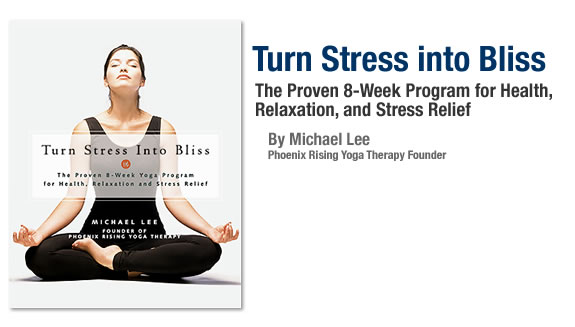In my last blog post we talked about the “form” and the “essence” of yoga. This week I’ll share with you some key tips for easily tapping in to the essence of the practice. Following these tips will help you maximize the benefits and effectively use yoga as a tool for managing stress.
1. TIME AND PLACE – To get the most from my yoga practice I do it in the same place and at roughly the same time every morning. I make sure there is plenty of time available by getting up early enough to complete my hour long ritual each before anything else happens in my day. It does not have to be an hour. That’s just my preference. As little as 15 minutes can work as long as it happens daily and is a focused time.
2. WARM UP – I don’t start right away with trying to get deeply into the essence. Instead I spend a few minutes with vigorous movement and breath. You can just jump around if you want, or shake your body, do random movements or whatever just plain feels good to wake up your body and your breath. There is a section in “Turn Stress Into Bliss” that describes a warm up routine that I like to use.
3. BREATHING – Once you begin your yoga practice pay as much attention to your breath as you do to your body. Long, slow, deep, inhalations followed by relaxed full exhalations that are coordinated with you body movements work best.
4. PLAY THE EDGE – Remove all force, strain, and trying from your practice. Instead come gently to your edge in each posture using your breath to help you slowly get there. Some years ago I wrote an article on Playing The Edge that was published in Yoga Journal. If you are a yoga teacher and would like to copy it for your students, email me. It may help them add another dimension to their approach to yoga. I like to think of my yoga practice as “effortless effort”.
5. FOCUS AWARENESS – Once you arrive at your edge, practice being present physically and emotionally to whatever you might be experiencing right NOW.
6. ACCEPT – Whatever you notice, accept it. This is what is happening now and all that needs to happen.
7. CHOOSE - Decide in the moment how to be present to what is happening. You might feel an urge to move into a harder edge. Do you really want to do this? Choose. Practice making different choices and see what happens as a result.
8. PAUSE AND REFLECT – After each posture and again at the end of your practice take a few moments to reflect on your experience and what you noticed. In Phoenix Rising Yoga Therapy one key element of the process is what we call Integration. It’s one of the key features of the practice that help make it such an effective modality.
All of the above tips are described in detail in Turn Stress into Bliss. Another good way for new yoga students to learn how to work with yoga this way is to find a yoga teacher or yoga therapist who can teach and guide them with a private session.
If you find this blog post helpful, please email it to your friends, students, or colleagues by clicking on the little mail envelope below. Also if you have any comments or questions please use the comment link below. I love to hear from my readers.
Subscribe to:
Post Comments (Atom)






1 comment:
Yoga is a helpful and effective method to free you from the pressures of everyday living. A simple type of breathing, poses and meditation are enough to alleviate your stress.
Yoga for stress relief
Post a Comment